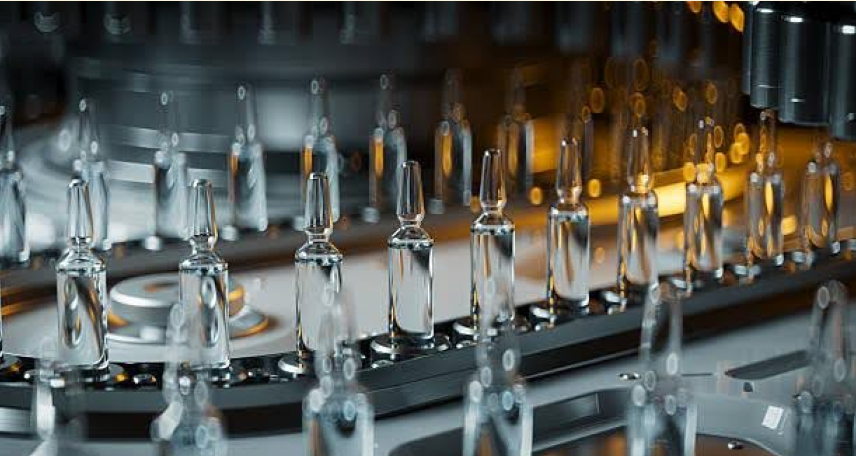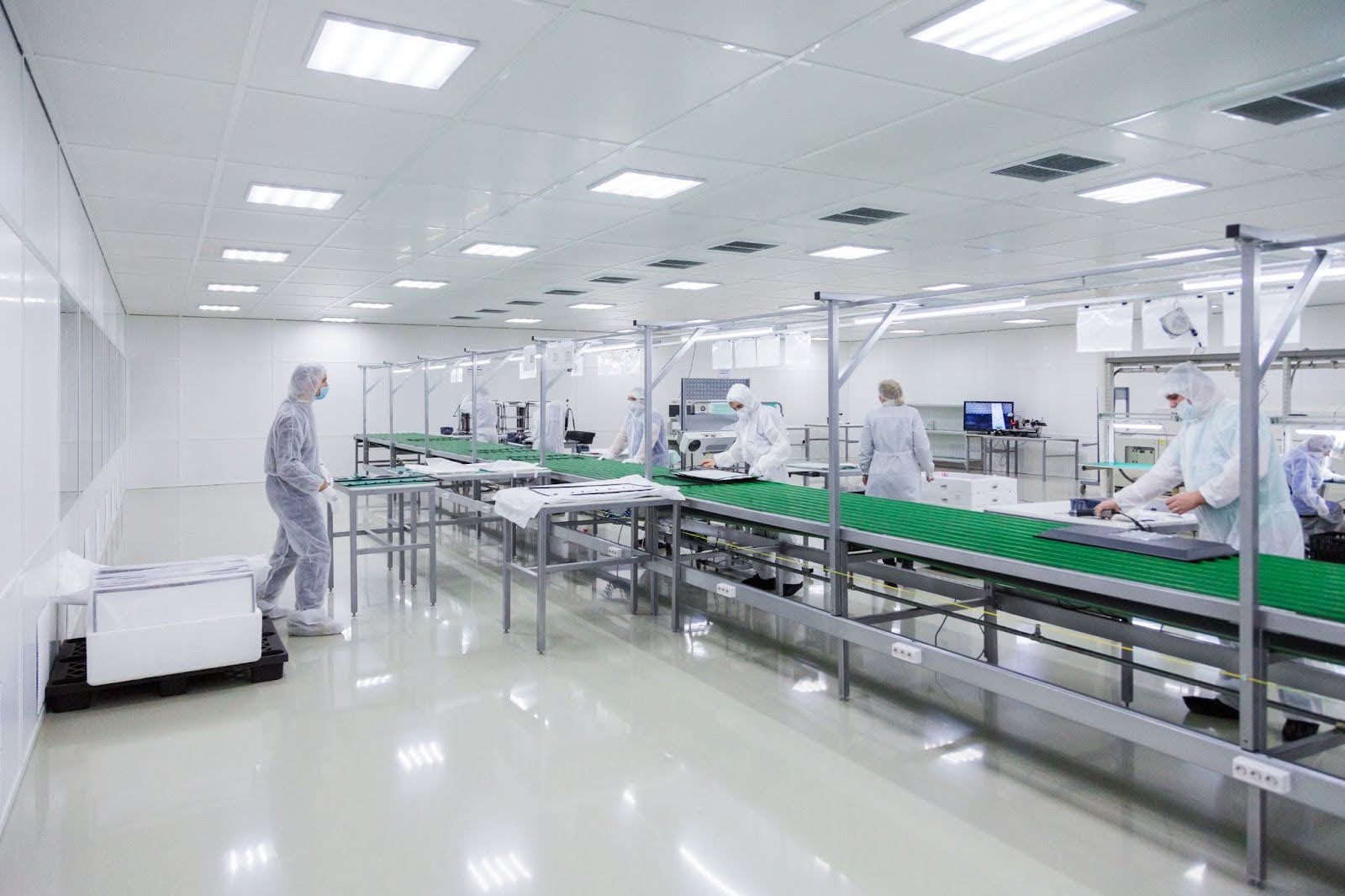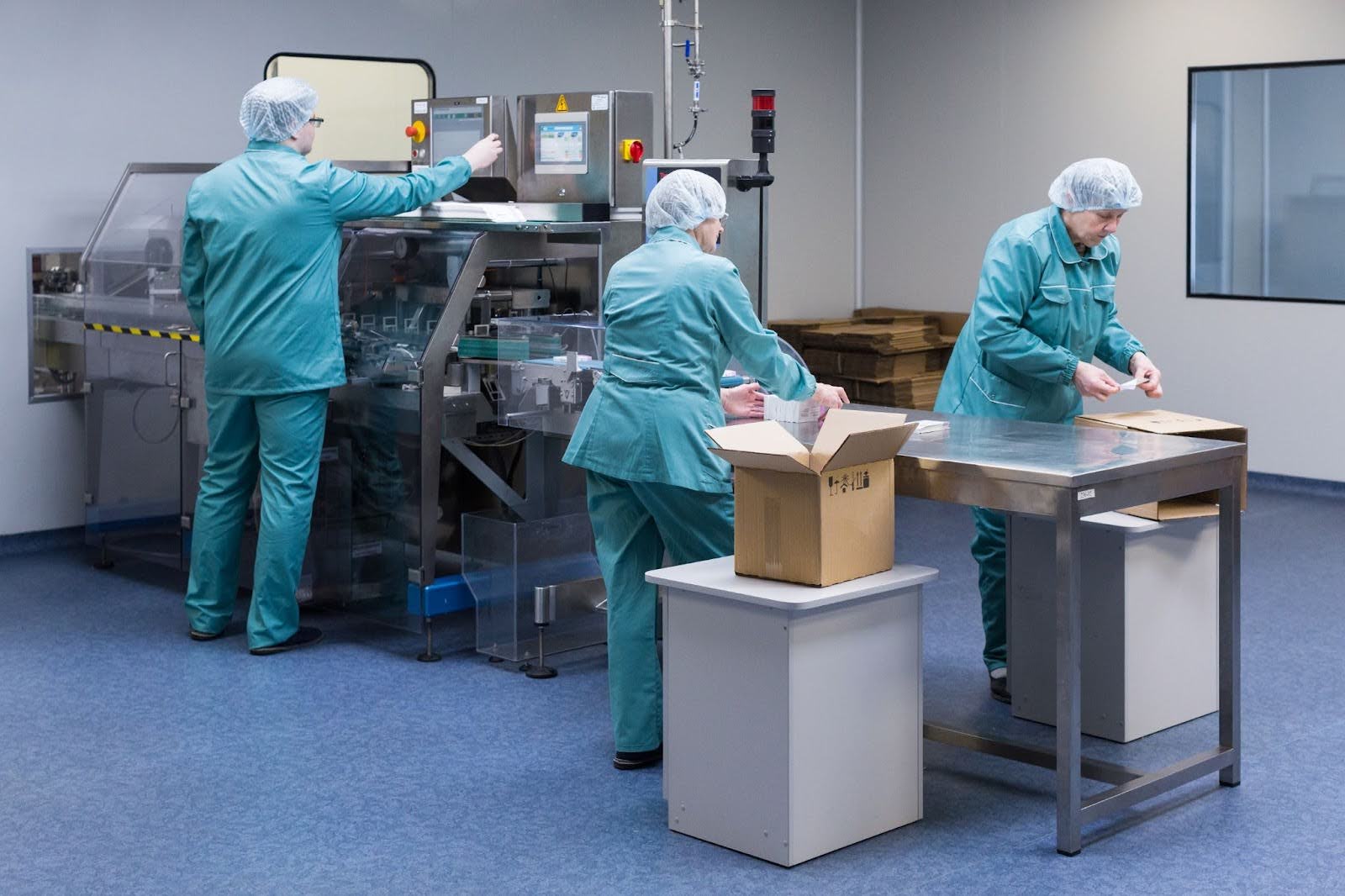by Simantini Singh Deo
8 minutes
A Step-By-Step Guide To Material Transfer And Airlock Management Under Annex 1
Understand Annex 1 rules for airlocks and material transfer in sterile manufacturing.

The revised EU GMP Annex 1 has placed renewed emphasis on contamination control strategies (CCS) in sterile manufacturing environments. Among the critical elements addressed in the 2022 update, material transfer and airlocks stand out as essential components for maintaining the aseptic integrity of cleanrooms.
Material transfer represents one of the most common vectors for contamination in sterile facilities whether from personnel involvement, packaging materials, or movement between classified areas.
Airlocks, on the other hand, act as physical and environmental barriers that prevent cross-contamination and control airflow during material or personnel transfer. Integrating nonviable particle monitoring in cleanrooms supports airlock qualification by verifying airflow integrity and particulate control during material transfer.
This article provides an in-depth exploration of Annex 1 expectations regarding material transfer and airlock design, their functional principles, and best practices to ensure regulatory compliance and effective contamination control in both new and legacy facilities.
What Is The Role Of Material Transfer In Contamination Control?
Material transfer refers to the controlled movement of items such as components, raw materials, equipment, and waste between different cleanliness zones. In aseptic environments, these transfers are critical events that can introduce viable or non-viable contaminants if not properly managed.
Annex 1 emphasizes that the movement of materials must be unidirectional and designed to minimize contamination risk. Each transfer activity should be supported by risk assessments, validated processes, and detailed SOPs that define the cleaning, disinfection, and wrapping requirements at every step.
Some Key Principles Outlined In Annex 1 Include:
- Segregation Of Clean & Dirty Areas: Movement between Grade C/D (support zones) and Grade A/B (critical areas) must be tightly controlled through validated transfer procedures.
- Minimization Of Manual Intervention: Wherever possible, automated or closed transfer systems should be implemented to reduce human contact.
- Use Of Double Or Triple Wrapping: Materials should be wrapped appropriately to allow progressive removal of layers as they pass through cleaner zones.
This structured approach ensures that material flow supports the overall contamination control strategy rather than becoming a source of risk. Routine surface monitoring in pharmaceutical cleanrooms complements transfer validation by confirming the effectiveness of disinfection across airlock contact points.
Airlocks: The Barrier Between Cleanliness Grades
Airlocks serve as controlled buffer zones between cleanroom areas of differing cleanliness grades. Annex 1 specifies two primary types of airlocks — personnel airlocks (PALs) and material airlocks (MALs). Both function to maintain pressure differentials, control particle migration, and enable disinfection or gowning processes before entry into higher-grade areas.
In the case of MALs, their design and operation are critical to maintaining aseptic conditions during material transfer. They often include physical barriers (e.g., interlocked doors), defined pressure regimes, and integrated decontamination systems such as vaporized hydrogen peroxide (VHP) chambers.
The Key Functions Of Airlocks Include:
- Maintaining Pressure Cascades: To ensure airflow moves from clean to less clean areas.
- Facilitating Disinfection: Providing sufficient dwell time and validated decontamination processes.
- Preventing Simultaneous Door Openings: Through interlocking mechanisms that prevent breaches in containment.
- Supporting Unidirectional Flow: Reinforcing a contamination-free movement of personnel and materials.
By ensuring that airlocks are both properly designed and validated, facilities can effectively uphold the physical and microbiological barriers that safeguard aseptic processing environments.
Insights from Grade A/B cleanroom excursion case studies show how pressure imbalances or poor transfer discipline often trigger cross-grade contamination.
Annex 1 Expectations For Material Transfer and Airlocks
Annex 1 emphasizes that material and personnel movement should be an integral part of the facility’s Contamination Control Strategy (CCS). This means each step from material preparation to its entry into the aseptic core should be scientifically justified and documented.
Some Of The Key Expectations Highlighted Include:
- Documented Transfer Procedures: Clear SOPs should define how materials are cleaned, disinfected, and transferred between zones, including wrapping removal steps.
- Validated Decontamination Processes: Decontamination methods (e.g., VHP, alcohol wipes, UV treatment) must be validated for effectiveness against relevant microorganisms.
- Airlock Design Qualification: Airlocks must be qualified for pressure differentials, airflow direction, and recovery times.
- Minimization Of Personnel Involvement: Automated material transfer systems such as Rapid Transfer Ports (RTPs) or isolators are encouraged.
- Regular Monitoring: Environmental monitoring programs should include viable and non-viable sampling at material entry points to detect potential contamination trends.
These expectations underline the regulators’ increasing focus on data-driven contamination prevention rather than reactive detection.
Common Challenges In Material Transfer And Airlock Design
Despite regulatory clarity, many facilities, especially brownfield or legacy sites, face recurring challenges in implementing compliant and efficient material transfer processes.
Common Issues Include:
- Improper Pressure Cascades: Inconsistent or poorly balanced pressure differentials can lead to reverse airflow and contamination.
- Unvalidated Cleaning or Disinfection: Failure to validate transfer disinfection methods often leads to inadequate decontamination.
- Human Error During Transfer: Manual handling and procedural deviations contribute significantly to contamination risks.
- Inadequate Airlock Design: Older facilities may lack proper interlocks, decontamination chambers, or defined airflow patterns.
- Poorly Segregated Material Flows: Cross-flow between clean and dirty items increases contamination potential.
Recognizing and addressing these challenges is critical for maintaining control over aseptic processes. The microbiologists’ role in HACCP-based contamination control framework can help prioritize material-transfer hazards and establish measurable critical control points.
Standard Procedures For Effective Material Transfer and Airlock Management
To align with Annex 1 requirements and enhance aseptic assurance, facilities should implement the following best practices:
A) Design Airlocks Based On Functional Zoning — Airlocks must be strategically located between areas of differing cleanliness grades and designed according to their purpose—personnel or material. For materials, consider integrating VHP decontamination chambers or pass-through autoclaves for sterilized loads. The airlock’s size, airflow pattern, and pressure regime must support the cleanroom hierarchy while minimizing stagnation or turbulence.
B) Validate And Maintain Pressure Differentials — Proper pressure cascades are fundamental to preventing backflow of air from lower-grade to higher-grade zones. Each airlock should maintain a positive pressure differential typically between 10 to 15 Pa—relative to the dirtier area. Periodic verification through calibrated gauges and alarm systems ensures sustained compliance.
C) Implement A Layered Wrapping And Unwrapping Procedure — Materials entering Grade A/B areas should be double or triple wrapped to facilitate progressive removal of outer layers during transfer. Each unwrapping stage should coincide with the transition into a cleaner zone. This minimizes the risk of transferring particles or microbes into higher-grade environments.
D) Employ Validated Disinfection And Decontamination Methods — Disinfection processes whether manual wiping or automated VHP cycles must be validated for contact time, coverage, and microbial efficacy. Using rotation of disinfectants and ensuring dwell times according to manufacturer recommendations enhances robustness.
E) Automate Transfer Where Possible — Reducing human intervention through automated material transfer systems, such as RTPs, isolators, or robotic handling, significantly lowers contamination risks. These systems also enable consistent performance and traceability through integrated sensors and audit trails.
F) Train Personnel On Transfer Protocols — Even the best-designed airlocks and systems fail without well-trained operators. Personnel should undergo periodic training on material transfer procedures, aseptic behavior, and incident response. Emphasizing aseptic awareness fosters accountability and vigilance.
G) Conduct Routine Environmental And Performance Monitoring — Establish routine monitoring within airlocks and at material entry/exit points. Monitoring should include non-viable particle counting, viable sampling (settle plates or active air sampling), and surface swabs. Data from these sources help identify contamination trends and inform CCS reviews.
Integration Of Material Transfer Controls Into CCS
Annex 1 requires that the facility’s Contamination Control Strategy incorporates material transfer and airlock design as part of the holistic contamination prevention framework. Each process should link to risk assessments that evaluate potential contamination sources, effectiveness of barriers, and frequency of interventions.
Key Elements For Integration Include:
- Process mapping to visualize material and personnel flows.
- Risk ranking of transfer steps to identify critical control points.
- Periodic review of transfer efficiency through deviation analysis and trend data.
- Implementation of CAPAs when recurring contamination events are detected.
Integrating material transfer data within CCS ensures continuous improvement and long-term aseptic reliability. Adopting rapid microbiological method implementation accelerates verification of decontamination efficacy in airlocks and transfer zones.
In Conclusion
Material transfer and airlocks may seem routine operations in cleanroom facilities, but they represent pivotal control points for contamination management. The revised Annex 1 has elevated their importance, emphasizing scientific justification, validation, and integration into the overall CCS.
By designing airlocks with functional zoning, validating disinfection methods, maintaining pressure control, and training personnel effectively, manufacturers can significantly minimize the risk of microbial ingress. Ultimately, successful implementation of Annex 1 principles for material transfer and airlocks not only strengthens regulatory compliance but also ensures consistent product sterility and patient safety—upholding the very foundation of aseptic manufacturing
FAQs
1) Why Are Airlocks Important In Aseptic Facilities?
Airlocks maintain pressure cascades, prevent contamination transfer, and provide a controlled environment for personnel or materials entering higher-grade cleanrooms.
2) How Can Material Transfer Minimise Contamination Risk?
A: Using double/triple wrapping, validated disinfection, automated transfer systems, and strict SOPs reduces human contact and prevents particles or microbes from entering critical zones.
3) What Does Annex 1 Require For Material Transfer Procedures?
Annex 1 requires documented, validated, and risk-assessed transfer processes that include cleaning, disinfection, pressure control, and environmental monitoring to ensure aseptic integrity.




